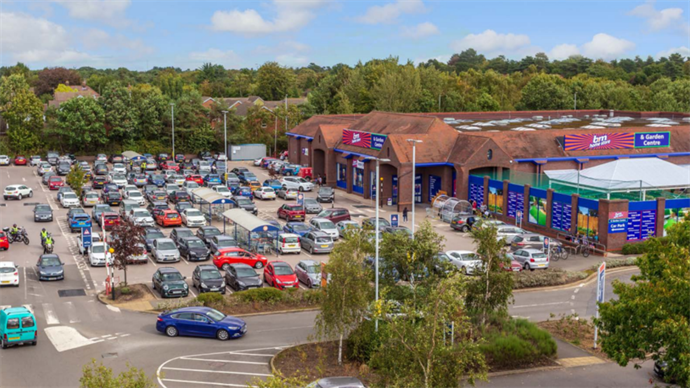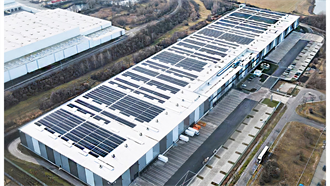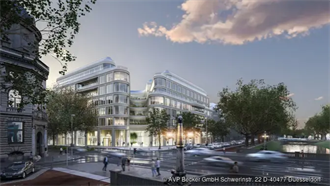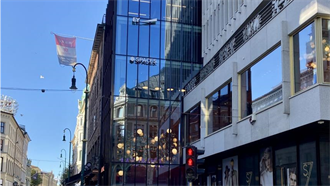In a world of expanding retail property yields, retail warehouse assets are bucking the trend. Why? ‘A word – warehouse,’ says Richard Croft, executive chairman of pan-European property investor M7.
‘Warehouses are the sexiest real estate assets in the world. The unsexist word in real estate is retail. Investors often focus on the term “retail” but these assets are warehouses with retail components,’ Croft says. ‘Right now, they can only be occupied by retailers and are doing well in any case. But in a world with a chronic shortage of logistics assets, retail parks also have broader appeal for their long-term potential.’
For Croft, retail parks work on a number of levels. ‘They offer big, flexible units; free parking and easy parking for large cars, and work well for click-and-collect – most of the time they comprise retail space at the front and warehousing at the back. Conversely, town centres are struggling due to poor council planning, high rates, and small units where click-and-collect is difficult. Parking is expensive or impossible. Retail parks have very low site density and attract lots of cars – which means that we don’t think they’ll win new planning permits in the future.
'Finally, the likes of Amazon are increasingly coming along and converting retail parks into warehouse sites, with others earmarked for residential, so there will be fewer and fewer available as time goes on.’
M7 historically avoided retail real estate investment, but all that changed a few years ago when the firm’s analysis uncovered what Croft calls an ‘under-priced’ opportunity. Fully deployed investment vehicles to date include M7 Box I and II, which completed some £300 mln (€355 mln) of deals earlier this year across 19 UK retail warehouses, on the back of a £130 mln equity raise. Croft says that Box III is now on the horizon. ‘We are focusing on amassing retail warehouses and aim to be a long-term holder of those assets,’ he explains.
Tax-efficient
M7 holds further retail warehouses in another investment vehicle, M7 Real Estate Investment Partners VIII, which has recently been earmarked for a tax-efficient transformation into a REIT. M7 announced at the end of September that it would acquire a £120 mln portfolio of 18 UK retail warehouses from fund VIII to launch the M7 Regional E-Warehouse REIT, which will be listed on IPSX.
This recently established exchange introduces liquidity to the business of real estate through the trading of shares in REITs, avoiding the redemptions risk faced by open-ended funds. ‘One of IPSX’s greatest attributes is that, through securitisation, it enables quick and equal access to investment in commercial real estate,’ says Croft.
‘This process will also transfer and onshore the investment from a closed ended, Jersey domiciled private investment vehicle to an investment in a UK vehicle which offers daily liquidity via a public listing on a regulated stock exchange, and benefits from the advantages of the UK’s REIT regime.’
Croft explains that the ‘E’ in ‘E-Warehouse’ stands for ‘enhanced’. ‘These assets have always been warehouses, but the planning is enhanced – an aspect which is actually priced at a discount.’ He adds: ‘M7 will very soon be the largest retail warehouse landlord in the UK.’
Savills IM joins bargain hunt
International real estate investment manager Savills Investment Management is another firm keeping an eye out for retail bargains. The investor recently launched its own UK retail park strategy to capitalise on the strong income-producing characteristics of the sector, with a target capital raise of £360 mln.
Harry de Ferry Foster, head of UK at Savills IM, says that the fund is seeking to exploit the mismatch between the strong operating performance of the value sub-sector of UK retail parks and their relatively high yields compared to other sectors.
‘Falling retail property prices mean assets let to strong tenants can potentially be acquired at prices which reflect net operating income yields of 7-9%+,’ he notes. De Ferry Foster explains that retail parks’ attractions include reasonable rents, low vacancy rates of close to 5%, strong tenants and highly dependable income.
The fund is focusing on retail park assets at the value end, distinguished by the lowest rents in the category, preferring food anchors and discount retailer tenants such as B&M, Home Bargains Food Warehouse, but also bulky operators including DIY. ‘We prefer rents of £10-£15 per ft2 let to essential retailers, all of whom proved resilient throughout the pandemic.
‘But this isn’t just about the relative success of retail parks during Covid-19, when people needed a new laptop, pet food, DIY and sports gear, and retail parks delivered.
‘We do think their popularity will continue beyond the pandemic. A lot of shoppers have been introduced to the format in the last 18 months and find them incredibly convenient. There will also be very little new development and we anticipate that a few will be lost.
'Capital values per square foot are low – you are essentially buying them at replacement cost. There is also a strong F&B element which helps defend their popularity.’
Straits Real Estate, the real estate investment subsidiary of Singapore’s The Straits Trading Company (STC), and The Land Managers (TLM), the real estate investment division of the JL Family Office (JLFO), are cornerstone investors in the fund.
Andy Lim, group CEO of JLFO and founder of TLM adds: ‘We are pleased to work with Savills IM in our first investment into the UK. The country is experiencing a rapid recovery and its growth is set to be the fastest in Europe. By investing in a defensive retail asset class, we hope to capitalise on the pent-up demand from the Covid-19 restrictions over the last couple of years.’
One of the downsides of retail parks, from a sustainable perspective, is their low-density format built around access by personal car. While this also reinforces the investment case – it’s unlikely that future parks would obtain planning permission for this reason – De Ferry Foster thinks that fixes are available to improve their environmental profile in the longer term. ‘Their role in the click-and-collect narrative should actually mean fewer vans going to individual addresses,’ he notes.
‘Furthermore, we see potential to add both solar panels and electrical charging points. Once there has been a mainstream switch to electric vehicles, cars will be less of an issue. In general, as assets, they are not very energy hungry – not much is spent on heating or air conditioning.’
European positioning
On the continent, Austrian investor Immofinanz is both addressing sustainability issues surrounding retail warehouse sites and diversifying its portfolio with plans to add cross laminated timber housing to its Stop Shop retail park assets. The light-weight, green apartments will be built directly on top of the retail warehouses (See page 47). With its 100-strong Stop Shop portfolio currently in rude health across ten European countries, the firm has projected another 40 Stop Shops in the coming years.
While the value profile of retail parks is often referenced particularly in the context of the UK – perhaps because of the stark contrast with the country’s failing high streets – it’s another confirmation that the retail park model is alive and well across Europe.
Trei Real Estate, a spin-off of the Tengelmann Group in Germany, has been betting on rolling out new retail parks across Poland through its Vendo Park brand. The original plan was to develop 50 Vendo Parks for its own portfolio, but the idea has since expanded to include third parties. Says René Westerheider, head of asset management at Trei Real Estate: ‘We will approach institutional investors to raise third-party funds, bringing our know-how and presence in the market to the table.’
By the end of 2021 alone, the company will have opened seven new Vendo Parks in central and eastern Europe, bringing the Trei portfolio up to 38 retail parks, with 28 in Poland and the others in Slovakia and the Czech Republic. ‘We are now moving into cities even with populations as low as 20,000 residents,’ says Westerheider, adding that retail structures in Poland tend to be dated, especially outside the major cities.
‘We initially underestimated the demand for modern retail units in small and mid-size cities,’ says Westerheider, noting that the situation in Poland is a far cry from the cut-throat competition of Germany’s retail park scene. ‘Opening up a Vendo Park with six to eight stores here is like bringing a funfair to town. Even young people from the surrounding region will show up for the occasion.’



































